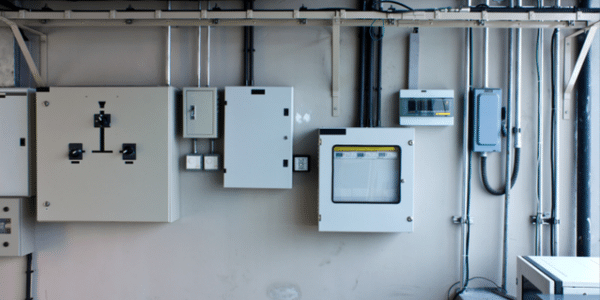Key Considerations for Installing Electrical Fiberglass Boxes in Hazardous Environments
6/4/20244 min read


Understanding Hazardous Environments and Their Challenges
Hazardous environments are characterized by conditions that pose a significant risk to health, safety, and equipment. These environments often contain explosive gases, combustible dust, or are subjected to extreme weather conditions. Understanding the nature of these hazardous areas is crucial for ensuring the safe and efficient installation of electrical fiberglass boxes.
There are various types of hazardous locations that pose unique challenges to electrical installations. Areas with explosive gases, such as petrochemical plants or refineries, require equipment that can prevent ignition. Similarly, environments with high levels of combustible dust, like grain elevators or mills, demand specialized equipment to avoid dust explosions. Extreme weather conditions, such as those found in offshore platforms or arctic regions, necessitate the use of materials that can withstand harsh climates.
Adherence to safety regulations and standards is paramount in these settings. The National Electrical Code (NEC) and the Occupational Safety and Health Administration (OSHA) provide comprehensive guidelines for electrical installations in hazardous environments. These standards outline the necessary precautions and equipment specifications to mitigate risks. Compliance with these regulations not only ensures the safety of personnel and equipment but also helps in avoiding legal repercussions.
Failure to follow these guidelines can result in severe consequences. Equipment failure is one of the primary risks, leading to costly downtime and repairs. More critically, non-compliance can pose significant safety hazards, including fires, explosions, and even fatalities. Additionally, neglecting safety standards can result in legal issues, fines, and damage to the organization’s reputation.
In summary, understanding and addressing the challenges of hazardous environments is essential for the safe and effective installation of electrical fiberglass boxes. By adhering to established safety regulations and standards, organizations can minimize risks, protect their personnel, and ensure the longevity and reliability of their equipment.
Advantages of Using Fiberglass Boxes in Hazardous Environments
Fiberglass is increasingly recognized as a superior material for electrical boxes in hazardous environments. One of the primary advantages of fiberglass is its inherent resistance to corrosion. Unlike metal, which can rust over time when exposed to moisture or harsh chemicals, fiberglass remains unaffected. This makes fiberglass boxes an excellent choice for environments where chemical exposure or high humidity is prevalent.
Another significant benefit of fiberglass is its non-conductivity. In hazardous environments where electrical safety is paramount, the non-conductive nature of fiberglass ensures that electrical boxes do not become a source of electrical hazards. This contrasts sharply with metal boxes, which can pose a risk of electric shock or short circuits if not properly insulated. Additionally, fiberglass is exceptionally durable, maintaining its structural integrity even under extreme temperatures. This makes it suitable for use in environments that experience wide temperature fluctuations or extreme heat.
When comparing fiberglass to plastic, fiberglass boxes offer superior strength and longevity. While plastic can degrade over time, especially under UV exposure or in chemically aggressive environments, fiberglass retains its properties, ensuring a longer lifespan. This durability translates to reduced maintenance costs and less frequent replacements, making fiberglass a cost-effective option in the long run.
Fiberglass boxes also come with relevant certifications and ratings that ensure their suitability for hazardous environments. Many fiberglass electrical boxes are rated for Class I, Division 2 hazardous locations, indicating they meet stringent safety and performance standards. These certifications provide assurance that the fiberglass boxes are designed to withstand the specific challenges posed by hazardous conditions, ensuring safety and reliability.
In summary, the use of fiberglass for electrical boxes in hazardous environments offers numerous advantages, including corrosion resistance, non-conductivity, durability in extreme temperatures, and relevant certifications. These properties make fiberglass a preferred material over metal or plastic, providing enhanced safety and performance in challenging conditions.
Best Practices for Installing Fiberglass Electrical Boxes
Installing fiberglass electrical boxes in hazardous environments requires meticulous attention to detail to ensure safety and functionality. The initial step is a thorough site assessment to identify potential risks such as exposure to corrosive chemicals, extreme temperatures, or explosive atmospheres. This assessment informs the selection of fiberglass electrical boxes, which are chosen for their high resistance to these conditions.
Choosing the appropriate box size and type is crucial. The box should accommodate all necessary wiring and components without overcrowding, which can lead to overheating or malfunction. Fiberglass electrical boxes come in various sizes and configurations, allowing for flexibility in addressing specific site requirements. Proper sealing is another critical factor; ensuring that the box is sealed correctly prevents the ingress of hazardous substances, which could compromise the integrity of the electrical system.
Utilizing compatible fittings and accessories is equally important. These components must be suited to the specific environmental conditions and compatible with the fiberglass material to prevent degradation or failure. It's essential to select fittings that provide a secure and tight connection, reducing the risk of exposure to hazardous elements.
Securing the fiberglass electrical box to withstand physical stresses is another best practice. The mounting method should accommodate potential vibrations, impacts, or other physical forces prevalent in the hazardous environment. Using robust mounting brackets and ensuring they are tightly secured can prevent the box from becoming dislodged or damaged.
Finally, regular maintenance and inspection are vital to ensure the long-term reliability and safety of the installation. Scheduled inspections can identify wear and tear, seal integrity, and the overall condition of the box and its components. Addressing minor issues promptly can prevent major failures and maintain the safety and efficiency of the electrical system.
By following these best practices, the installation of fiberglass electrical boxes in hazardous environments can be achieved with a high degree of safety and reliability, ensuring protection against potential hazards.
